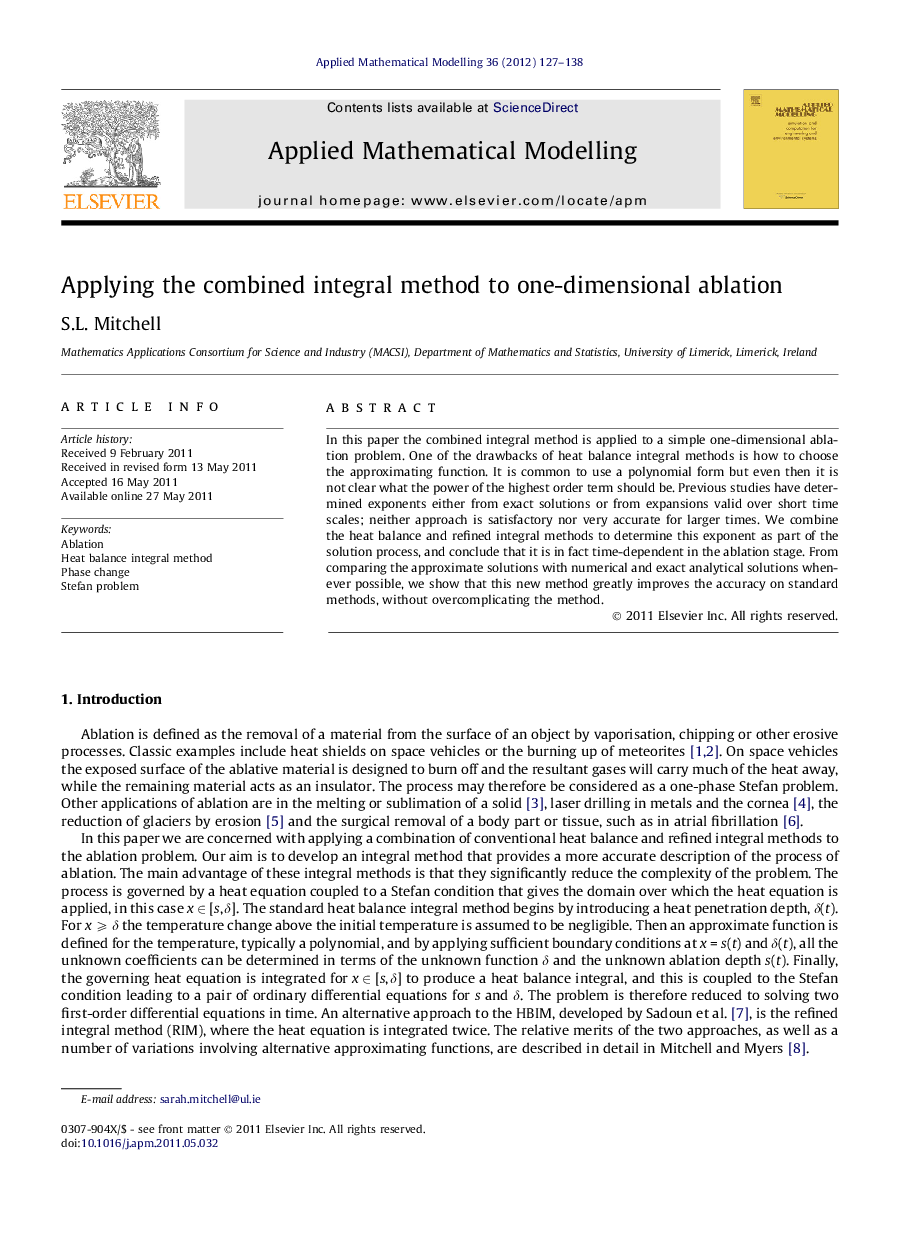| Article ID | Journal | Published Year | Pages | File Type |
|---|---|---|---|---|
| 1706034 | Applied Mathematical Modelling | 2012 | 12 Pages |
In this paper the combined integral method is applied to a simple one-dimensional ablation problem. One of the drawbacks of heat balance integral methods is how to choose the approximating function. It is common to use a polynomial form but even then it is not clear what the power of the highest order term should be. Previous studies have determined exponents either from exact solutions or from expansions valid over short time scales; neither approach is satisfactory nor very accurate for larger times. We combine the heat balance and refined integral methods to determine this exponent as part of the solution process, and conclude that it is in fact time-dependent in the ablation stage. From comparing the approximate solutions with numerical and exact analytical solutions whenever possible, we show that this new method greatly improves the accuracy on standard methods, without overcomplicating the method.
